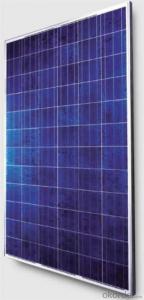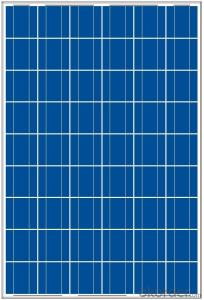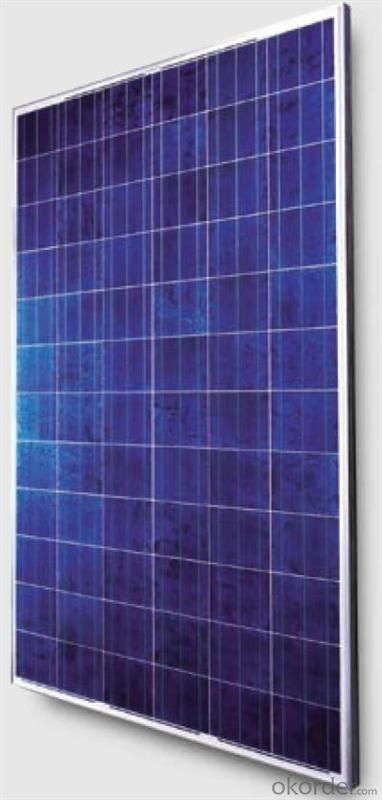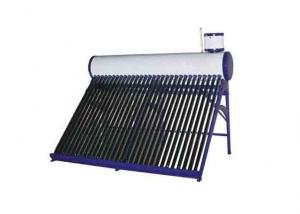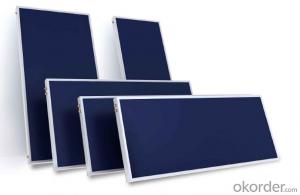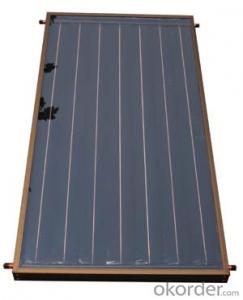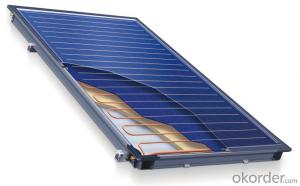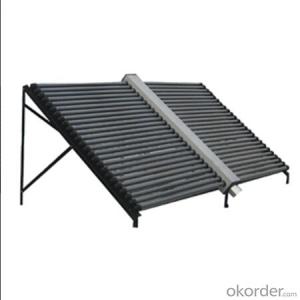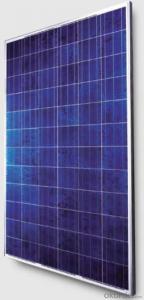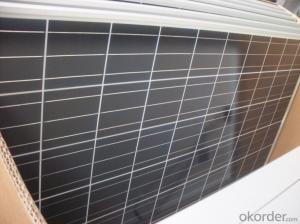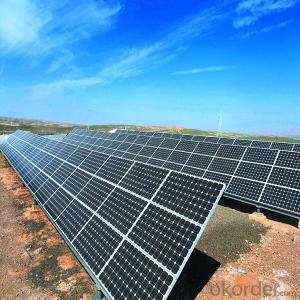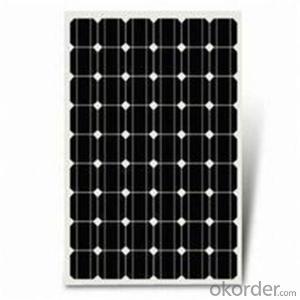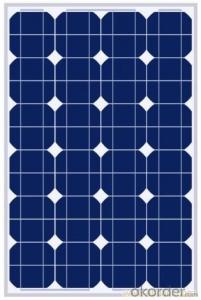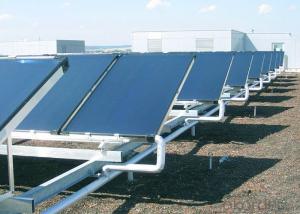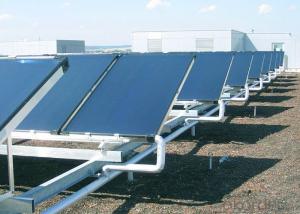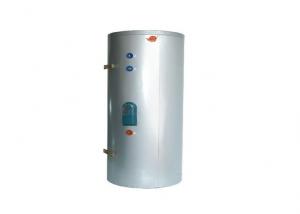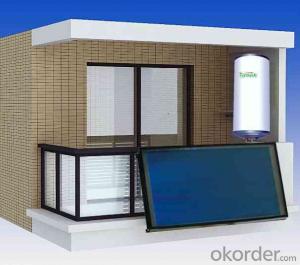Radco Solar Collectors - Polycrystalline Solar Modules Made in China for Exporting
- Loading Port:
- Tianjin
- Payment Terms:
- TT OR LC
- Min Order Qty:
- 1 pallet
- Supply Capability:
- 100000000 pallet/month
OKorder Service Pledge
OKorder Financial Service
You Might Also Like
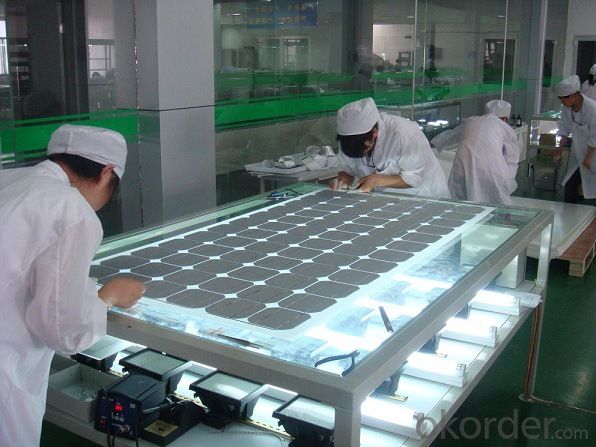
Specifications:
solar panels from 5W--300W, made of TAIWAN MOTECH brand cells,with CO in TAIWAN,Mono and Poly with VDE,IEC,CSA,UL,CE,ISO.
We import solar cells from Taiwan Motech brand, with this CO in taiwan and our CSA certification,we can still sell goods to Anti-dumping areas like USA. Our main products are solar panels, off grid and on grid solar home systems , solar street lighting systems, solar water heating system,solar pump,solar attic fan, solar DC LED lights and solar DC refrigerators.
Certificates : ISO, CE, VDE IEC, MCS, CSA-UL, CEC.
Delivery time: sample 10days, order 25-30days.
Sample: charged.
Payment term: T/T 30% as deposit, 70% before shipment. Or irrevocable L/C at sight.
Trade term: FOB Shenzhen or CIF destination seaport or Airport.
Characteristics:
I.Solar Cell : High efficiency crystalline solar cell. Even if under the weak light, the solar module can produce maximum power output.
II.Tempered glass (toughened glass): Anti-reflecting coating and high transmission rate glass increase the power output and mechanical strength of solar module.
III.EVA and TPT: Using high quality EVA and TPT to prevent destroying and water.
IV.AI frame: Without screw, corner connection. 6 holes on the frame can be installed easily.
V.Junction box: Multi function junction box with water proof.
VI.Long lifetime: ≥25 years; Less power decrease.
VII.Good performance of preventing from atrocious weather such as wind and hails.
VIII.Resisting moisture and etching effectively, not effected by geology.
IX.The certificate issued by international authority: UL, TUV, IEC, VDE, CE.
Quality and Safety
1. Rigorous quality control meets the highest international standards.
2. High-transmissivity low-iron tempered glass, strong aluminium frame.
3. Using UV-resistant silicon.
4. IS09001/14001/CE/TUV/UL
Warranties
1. 10 years limited product warranty
2. 15 years at 90% of the minimal rated power output
3. 25 years at 80% of the minimal rated power output
Technical date :
ITEM NO.: | Poly 156*156 cell ,60pcs . Power range from 230Wp-260Wp | ||||||
Maximum Power(W) | 230 | 235 | 240 | 245 | 250 | 255 | 260 |
Optimum Power Voltage(Vmp) | 29.4 | 29.5 | 29.7 | 30.1 | 30.3 | 30.5 | 30.7 |
Optimum Operatige Current(Imp) | 7.83 | 7.97 | 8.08 | 8.14 | 8.25 | 8.37 | 8.48 |
Open Circuit Voltage(Voc) | 36.7 | 36.8 | 36.9 | 37.1 | 37.3 | 37.5 | 37.7 |
Short Circuit Current(Isc) | 8.52 | 8.59 | 8.62 | 8.65 | 8.69 | 8.73 | 8.78 |
Solar Cell: | 156*156 Poly | ||||||
Number of Cell(pcs) | 6*10 | ||||||
Name of Solar Cells | Polycrystalline Cell | ||||||
Size of Module(mm) | 1650*992*40/45/50 | ||||||
Cable & Connector Type | Pass the TUV Certificate | ||||||
Frame(Material Corners,etc.) | Aluminium-alloy | ||||||
Back sheet | TPT | ||||||
Weight Per Piece(KG) | 19.5KG | ||||||
FF (%) | 70-76% | ||||||
Junction Box Type | Pass the TUV Certificate | ||||||
Tolerance Wattage(e.g.+/-5%) | ±3%, or 0-3% | ||||||
Front Glass Thickness(mm) | 3.2 | ||||||
Temperature Coefficients of Isc(%) | +0.04 | ||||||
Temperature Coefficients of Voc(%) | -0.38 | ||||||
Temperature Coefficients of Pm(%) | -0.47 | ||||||
Temperature Coefficients of Im(%) | +0.04 | ||||||
Temperature Coefficients of Vm(%) | -0.38 | ||||||
Temperature Range | -40°C to +85°C | ||||||
Surface Maximum Load Capacity | 5400Pa | ||||||
Allowable Hail Load | 23m/s ,7.53g | ||||||
Bypass Diode Rating(A) | 12 | ||||||
Warranty | 90% of 10 years, 80% of 25 years. | ||||||
Standard Test Conditions | AM1.5 1000W/ 25 +/-2°C | ||||||
Packing | carton or pallet | ||||||
1*20' | 14 Pallets / 316pcs | ||||||
1*40'STD | 25 Pallets / 700pcs | ||||||
FAQ:
We have organized several common questions for our clients,may help you sincerely:
1. What’s price per watt?
A: It’s depends on the quantity, delivery date and payment terms of the order. We can talk further about the detail price issue. Our products is high quality with lower price level.
2. Can you tell me the parameter of your solar panels?
We have different series of cells with different power output, both from c-si to a-si. Please take our specification sheet for your reference.
3. How do you pack your products?
We have rich experience on how to pack the panels to make sure the safety on shipment when it arrives at the destination.
4. Can you do OEM for us?
Yes, we can.
5. How long can we receive the product after purchase?
In the purchase of product within three working days, We will arrange the factory delivery as soon as possible. The perfect time of receiving is related to the state and position of customers. Commonly 7 to 10 working days can be served.
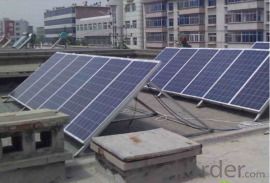
- Q: Can solar collectors be used in conservation areas?
- Yes, solar collectors can be used in conservation areas. They are a sustainable and environmentally friendly energy source that can help reduce the carbon footprint in these areas. However, it is important to consider the specific regulations and guidelines of each conservation area to ensure that the installation and use of solar collectors align with the preservation goals of the area.
- Q: Can solar collectors be used for heating government buildings?
- Yes, solar collectors can be used for heating government buildings. Solar heating systems can be installed on rooftops or nearby open spaces to capture the sun's energy and convert it into heat. This renewable energy source can help reduce reliance on fossil fuels and lower the carbon footprint of government buildings while providing efficient heating solutions.
- Q: Can solar collectors be used for heating pharmaceutical manufacturing plants?
- Yes, solar collectors can be used for heating pharmaceutical manufacturing plants. Solar thermal systems can provide a sustainable and renewable source of heat energy, which can be utilized for various processes in pharmaceutical manufacturing, such as heating water, sterilization, or maintaining controlled temperatures in production areas. By harnessing solar energy, pharmaceutical plants can reduce their reliance on fossil fuels and decrease their carbon footprint while ensuring efficient and environmentally friendly operations.
- Q: Are solar collectors suitable for shopping malls and retail centers?
- Shopping malls and retail centers can greatly benefit from the use of solar collectors. With their large rooftops, these establishments provide ample space for the installation of solar panels, making them ideal candidates for generating solar energy. By implementing solar collectors, these establishments can decrease their reliance on traditional electricity sources, resulting in significant long-term cost savings. Furthermore, shopping malls and retail centers have high energy demands due to the extensive use of lighting, air conditioning, and other electrical systems necessary to maintain a comfortable shopping environment. Solar collectors can effectively generate a substantial amount of electricity during daylight hours, offsetting a significant portion of their energy consumption and reducing dependence on the grid. Moreover, the installation of solar collectors aligns with the corporate social responsibility goals of shopping malls and retail centers. By harnessing renewable energy sources like solar power, these establishments can reduce their carbon footprint and showcase their commitment to sustainability. This environmentally friendly approach can also resonate positively with customers, potentially attracting more environmentally conscious shoppers. Nevertheless, before implementing solar collectors in shopping malls and retail centers, it is crucial to consider certain factors. These include evaluating the available rooftop space, determining the feasibility of installation, and assessing the potential return on investment. Additionally, proper maintenance and monitoring of the solar panels are necessary to ensure optimal performance and longevity. In conclusion, solar collectors offer a suitable and advantageous option for shopping malls and retail centers. They provide the opportunity to decrease energy costs, demonstrate environmental responsibility, and potentially attract more customers. However, careful planning and evaluation are key to ensuring successful implementation and maximizing the benefits of solar energy in these establishments.
- Q: Can solar collectors be used in industrial facilities?
- Yes, solar collectors can be used in industrial facilities. Solar collectors can efficiently harness solar energy and convert it into electricity or heat, which can be utilized in various industrial processes such as heating water, powering equipment, or providing space heating and cooling. Using solar collectors in industrial facilities can help reduce reliance on traditional energy sources, lower operating costs, and contribute to a more sustainable and environmentally friendly operation.
- Q: Are solar collectors suitable for residential use?
- Yes, solar collectors are suitable for residential use. They are a cost-effective and sustainable solution for generating clean energy for households. Solar collectors are designed to capture sunlight and convert it into usable electricity or heat, which can be used for various residential purposes such as powering appliances, heating water, or even providing energy for an entire home. They are easy to install, require minimal maintenance, and can significantly reduce energy costs while also reducing carbon emissions and dependence on fossil fuels.
- Q: Can solar collectors be used for heating hotels and resorts?
- Yes, solar collectors can be used for heating hotels and resorts. Solar thermal systems can effectively capture the sun's energy and convert it into heat, which can be used for various heating purposes including water heating, space heating, and even pool heating. Implementing solar collectors for heating in hotels and resorts can significantly reduce energy costs and carbon emissions while promoting sustainability and renewable energy usage.
- Q: What is the optimal tilt angle for solar collectors?
- The optimal tilt angle for solar collectors depends on various factors such as the geographic location, time of year, and the specific application. However, a general rule of thumb is to set the tilt angle equal to the latitude of the installation site. This allows the solar collectors to receive maximum sunlight throughout the year.
- Q: Is solar collector directly using solar energy?
- Solar collectors are directly using solar energy. A solar collector is a device that converts radiant energy from the sun into heat.
- Q: Can solar collectors be used for heating emergency response centers?
- Yes, solar collectors can be used for heating emergency response centers. Solar thermal collectors can capture sunlight and convert it into heat, which can then be used to provide warmth to the centers. This renewable energy source can be especially useful in emergency situations when access to traditional heating methods may be limited or disrupted.
Send your message to us
Radco Solar Collectors - Polycrystalline Solar Modules Made in China for Exporting
- Loading Port:
- Tianjin
- Payment Terms:
- TT OR LC
- Min Order Qty:
- 1 pallet
- Supply Capability:
- 100000000 pallet/month
OKorder Service Pledge
OKorder Financial Service
Similar products
Hot products
Hot Searches
